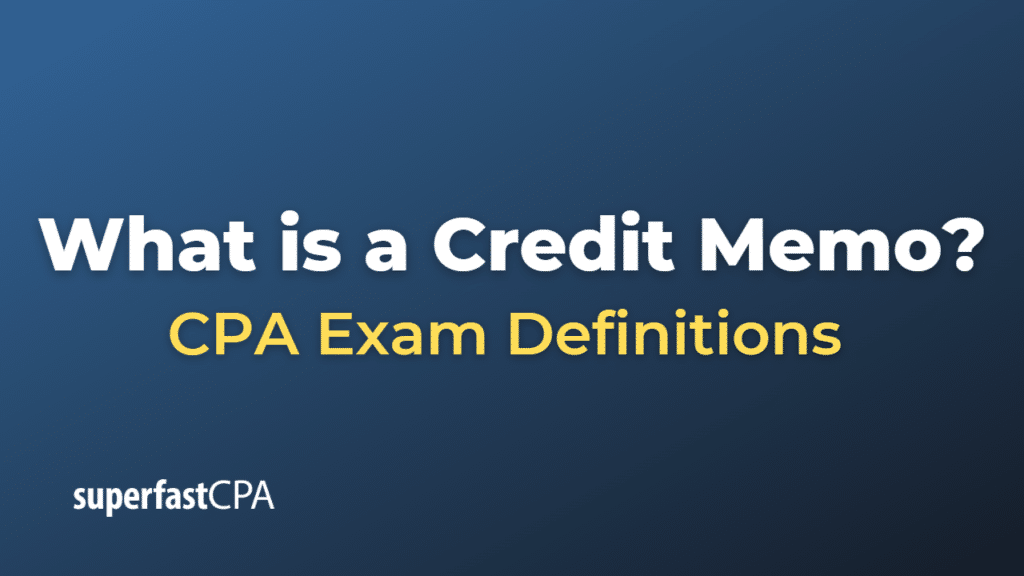Credit Memo
A credit memo, also known as a credit note, is a document issued by a seller to a buyer. It acknowledges that a certain amount is owed to the buyer for various reasons. This could be due to returned goods, an error in the invoice, an overpayment, or a successful negotiation for a discount.
The credit memo is a way to reduce the amount that the buyer owes in a future invoice, or in some cases, it may result in a refund if the buyer has already paid for the goods or services. It effectively provides the buyer with a ‘credit’ against the money they owe to the seller.
For example, if a buyer returns goods worth $200, the seller would issue a credit memo for this amount. This could be used to reduce a future invoice by $200, or if the buyer had already paid, it could result in a $200 refund.
A credit memo typically includes information such as the date, the amount of the credit, the reason for the credit, and details about the original invoice (if applicable). The credit memo would be recorded in the seller’s accounting system, reducing the amount of revenue recognized, and also reducing the amount of accounts receivable if the original invoice had not been paid.
Example of Credit Memo
Suppose there’s a business named “TechGadgets Inc.” that sells electronic products. One of its customers, “RetailStore”, purchases 100 units of a new gadget for $50 each, amounting to a total of $5,000. TechGadgets Inc. issues an invoice to RetailStore for this amount.
However, upon receiving the gadgets, RetailStore finds that 10 units are defective. They contact TechGadgets Inc. about the issue, and both parties agree that the 10 defective units will be returned.
To address this, TechGadgets Inc. issues a credit memo to RetailStore. The credit memo states a credit of $500 (10 units x $50 each) due to the return of defective products. The credit memo includes details like the date, the reason for the credit, and a reference to the original invoice.
Now, RetailStore has a credit of $500 from TechGadgets Inc. This amount can be used to reduce the payment for the original invoice (making the new payable amount $4,500 instead of $5,000) or it can be applied to future purchases. If RetailStore had already paid the original invoice, TechGadgets Inc. might refund the $500 or keep it as a credit for RetailStore to use later.
In TechGadgets Inc.’s accounting system, the revenue from the sale to RetailStore would be reduced by $500, and if the original invoice hadn’t been paid yet, the accounts receivable would also be reduced by $500. This reflects the fact that TechGadgets Inc. now expects to receive less money for this sale due to the returned products.













